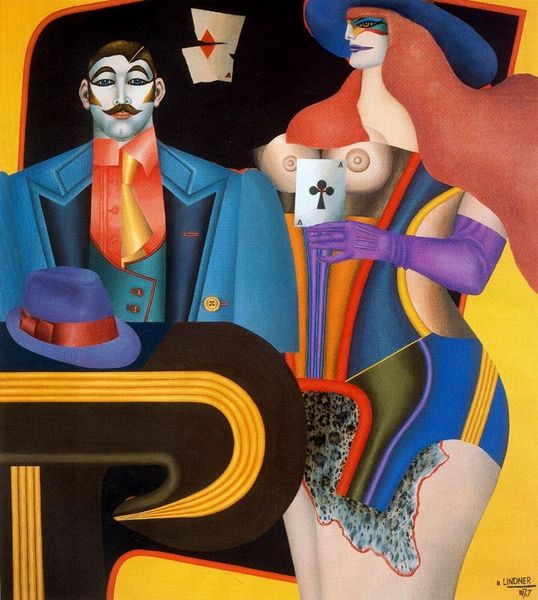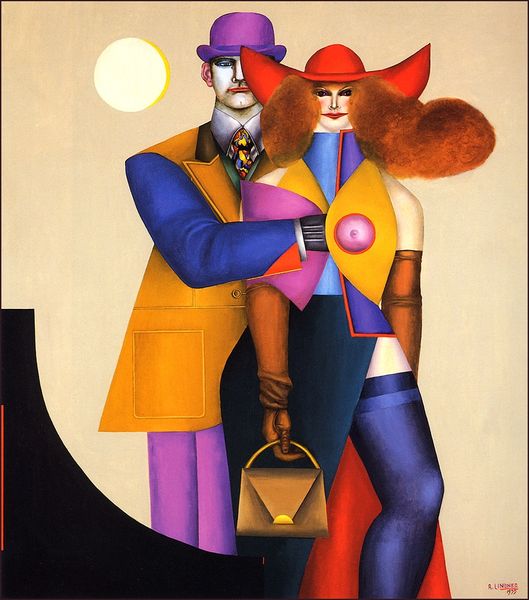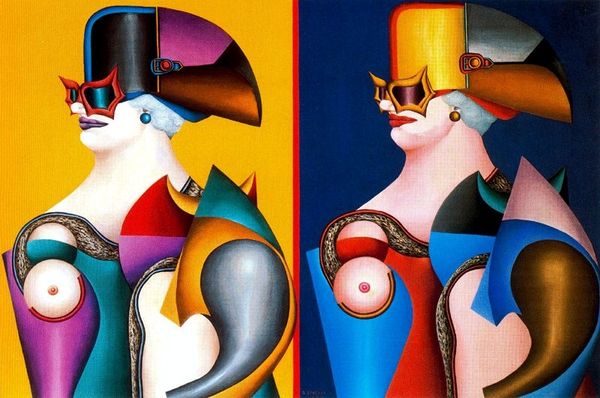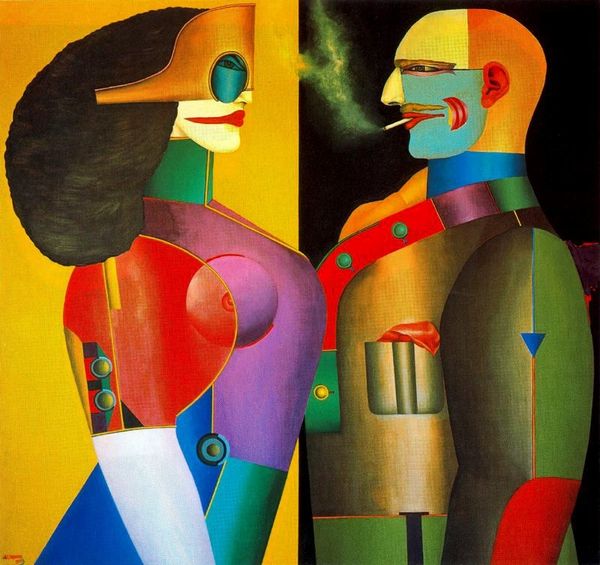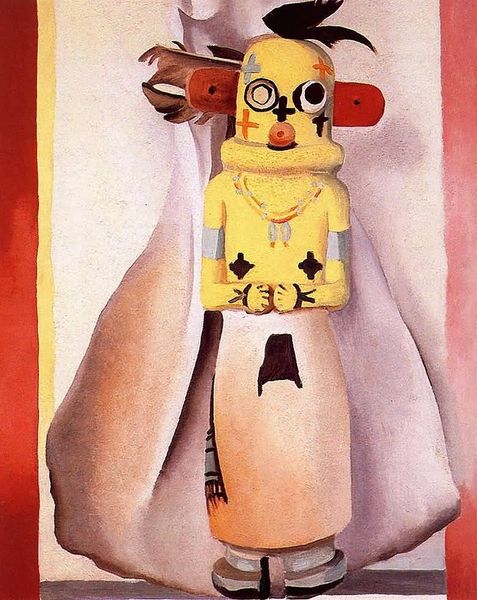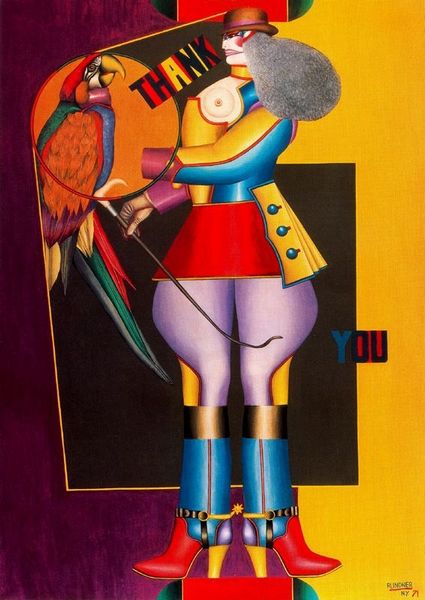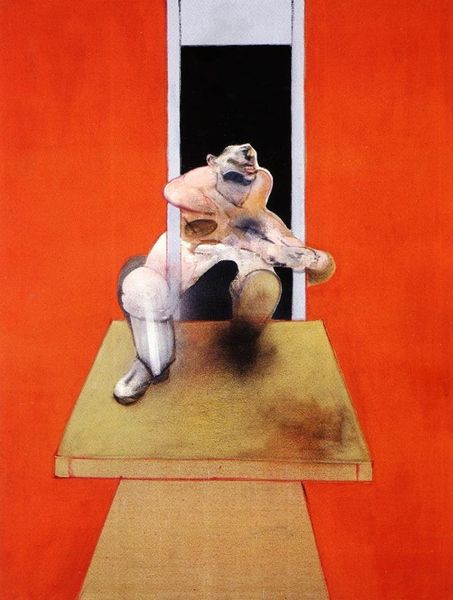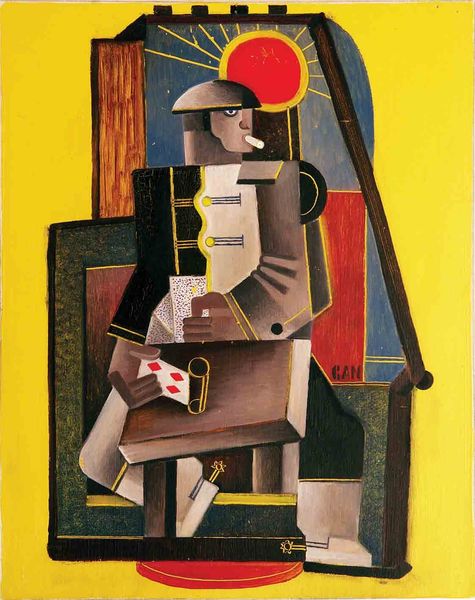
painting, acrylic-paint
#
portrait
#
painting
#
pop art
#
acrylic-paint
#
figuration
#
neo-expressionism
#
pop-art
#
cityscape
#
portrait art
#
modernism
Copyright: Richard Lindner,Fair Use
Curator: Looking at this, I get a visceral feeling of unease mixed with fascination. It’s jarring and beautiful all at once. Editor: That's interesting. You’re drawn in despite yourself? What you are experiencing likely stems from Richard Lindner’s visual vocabulary of disruption; here we have his 1966 acrylic painting, “Telephone”. Curator: Yes! The colors practically vibrate. And these characters, in a claustrophobic phone booth – are they even human? There’s something robotic about the one on the left with the conical head, and the other, while more realistically rendered, feels so distant and closed off behind those sunglasses and his carefully constructed expression. Editor: This piece reflects Lindner's own experiences with alienation. He was a German Jew who fled Nazi Germany and resettled in New York, always navigating the chasm between different cultural landscapes and identities. That is clearly reflected in these figures. He portrays a fractured, impersonal urban experience of the modern human condition that strips intimacy. Curator: So, this almost hyper-stylized vision actually connects to a deep personal sense of displacement? It’s amazing how he uses this strange palette, these intense, almost cartoonish lines, to explore something so profound. Editor: Absolutely. And think about the context too—1966. The height of the Cold War. There's a sense of surveillance and suspicion here. Who are these people calling? What information is being exchanged? Lindner leaves it open to interpretation. His Neo-Expressionistic, pop art approach amplifies themes of isolation. The title reinforces that even within a technological framework designed to connect, it can foster an increasing chasm of distrust, where appearances might suggest more than what truly exists. Curator: It really makes you think about our reliance on technology, how we communicate—or maybe *don't* communicate—in a world saturated with information and hidden agendas. These archetypes really amplify those kinds of worries and I agree. Editor: Precisely. His visual fragmentation reveals something so integral, perhaps too, about ourselves as well. The figures exist side-by-side, within a similar plane but their relationship is nonexistent beyond physical adjacency. What we are confronted with is, after all, a mirror reflecting an individual, existential loneliness in our society, in plain sight. Curator: It’s strangely comforting knowing even in the ‘60s, someone captured that feeling we still grapple with now in this striking, uncomfortable and yes, weirdly magnetic painting. Editor: It reveals something incredibly true and still relevant. To see such profound anxieties rendered in what seems like a benign setting is deeply affecting. It becomes much more potent by confronting that in such direct and disorienting ways.
Comments
No comments
Be the first to comment and join the conversation on the ultimate creative platform.
